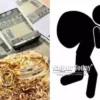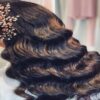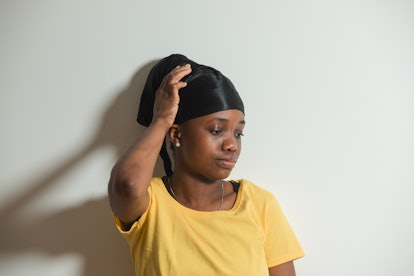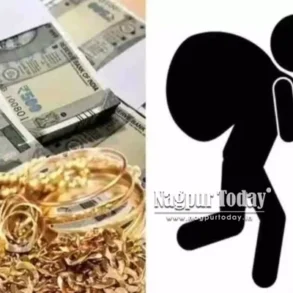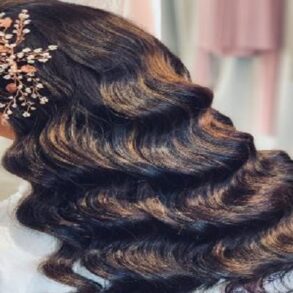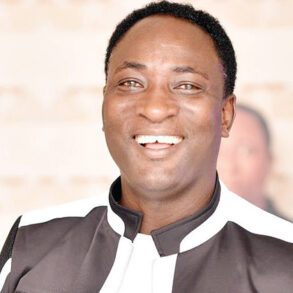I have a bone to pick with movies that show its Black actress clamoring out of bed without even a scarf protecting her hair. It immediately pulls me out of the story and directs my thoughts to those in the writer’s room who failed to speak with a Black woman about must-do, nighttime hair norms. While there is no single style that can fully characterize Black hair, one ritual that is nearly ubiquitous is wrapping your hair at night. “The women in my family taught me how to wrap my hair [from a young age],” recalls Taraji P. Henson, Founder of TPH by Taraji. “I would have to position my head a certain way on the pillow so that my scarf wouldn’t fall off. Even waking up countless times in the middle of the night to re-tie the scarf, like so many Black girls know.”
Regardless of the hairstyle itself, wrapping helps protect fragile strands and extends the life of labor-intensive techniques making it a cornerstone of the Black beauty experience. “There was always a covering over the braids and the style to make sure that my hair would last throughout the week until the following Sunday,” says celebrity hairstylist Lacy Redway. “I can remember as early as six doing this process.” Throughout history, bonnets, scarves, durags, and even old pantyhose have become not only important natural hair tools, but also fertile sites of innovation and Black resistance, deepening its impact on our culture at large.
Although bonnets are now almost exclusively associated with Black hair, they were once popular amongst most American women. Bonnets were worn for travel, as a fashion statement and to keep warm in chilly bed chambers throughout the 19th century. While “nightcaps” began to fall out of fashion, the early 1920s saw them return as Marcel waves and flapper hairstyles emerged. This natural ebb and flow of trend starkly contrasts with the legacy of hair coverings for Black women. The Tignon Laws passed in 1786 Louisiana decreed all free Black women were required to wear headscarves, called tignons, in an attempt to isolate and diminish their beauty. Black women widely adopted the law, but not without the silent rebellion of using ornate fabrics, elaborate tying styles and added decor, setting the stage for head scarves to be much more than just a cut of cloth.
Natural hair has always been a political statement as well as a point of self-expression for Black women. Accordingly, the practice of protecting it occupies both spaces. While bonnets and hair coverings were mainly a fashion accessory for others, bonnets offered practical and tangible solutions for Black hair. “Cotton just soaks up the oils [in your hair],” explains Redway. “It makes your hair more dry, brittle and susceptible to breakage.” This is particularly important for curly hair. “[Tighter curl patterns] tend to be drier than other hair types, so we need that extra layer of protection,” she says.
Relaxed, straightened hair needs to be protected from sweat and water while protective styles, like braids, are time consuming and expensive. “We knew that cotton sheets and things would mess with your hair, and if you spent a couple hundred dollars getting braids you want to preserve it,” says Kim Lewis, co-founder and CEO of CurlMix. “We were using bonnets before we all went natural. So we always knew we had to protect our hair at night.” Hair coverings also serve as necessary tools for achieving certain styles. “My memory of durags goes back to 360 Waves. Growing up, there were guys that would use durags to do that style,” says Redway. “[Durags are] also a great way to flatten the hair. I use it on set to help mold a shape in place because it has the ability to get closer to your scalp than scarves can.”
Despite its benefits, hair wrapping has faced criticism that reveals the nuances of European beauty standards. In 2021, actress Monique revived a years-long conversation around unwritten dress codes after posting an Instagram video advising young, Black women to “think twice” before wearing bonnets in public. While many agreed with the call to “look your best,” others felt the sentiment was anti-Black. When natural hair can still be an obstacle to landing a job or a durag is grounds for being denied entry into a bar, the topic of Black hair and its norms remains tenuous. “Wearing your scarf to school was something that was always frowned upon,” says Redway about her experience growing up in the ‘90s. “As Black people, there’s so much we have to re-educate others on.” At CurlMix, Lewis has found a way to make bonnets a professional and sustainable part of the workplace. “We have to wear hairnets on the floor of our manufacturing facility and we were tired of just throwing them away. It’s bad for the environment,” she says. “Your hair needs to be covered and it needs to be protected… Everyone in my manufacturing facility wears bonnets to work, but that might not be the attire we need if we were at a press interview.”
Bonnets have been a longtime tenet of Black culture, but they aren’t immune to the change of tides. New variations like satin-lined beanies, waterproof rain hats, silk pillow cases, and even the patent-pending Satin Quarter Sheets are transforming how Black women, and everyone else, care for their hair. With the help of TikTok, bonnets and its offshoots are being reintroduced as mainstream hair trends, unearthing questions around who can and should partake in the custom. “If other people [wear bonnets], it’ll normalize it,” says Lewis. “When you get closer to a culture like that, you have more understanding and respect for it.” Redway isn’t sold on the benefits of bonnets for straight hair types but is keen on the new opportunity for equal footing. “I want the purpose to be for everyone to be looked at the same,” she says. “If we’re wearing it outside and it’s being looked at a certain way — everyone should be looked at that way.”
This post was originally published on this site be sure to check out more of their content.

